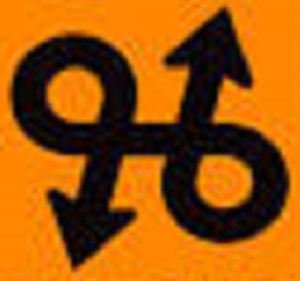
Political Science Glossary [5]
Political Party
An organized group that has as its fundamental aim the attainment of political power and public office for its designated leaders. Usually, a political party will advertise a common commitment by its leaders and its membership to a set of political, social, economic and/or cultural values (an “ideology”) that distinguish it from other political parties and which supposedly provide the basis for the policies the party proposes to implement or maintain through its members who obtain public office.
A political party differs from a pressure group in that a pressure group is primarily interested in influencing whatever government officials actually happen to be in office rather than in attaining office for its own leaders, and accordingly interest groups do not normally put forward candidates for public office under their own name (although they may sometimes endorse particular candidates put forward by party organizations). In a democracy, political parties primarily function as agencies for recruiting suitable candidates to run for elective office and for organizing and conducting election campaigns. They may also become important in selecting candidates for appointive political office when winning the election has provided the party’s leaders with power to appoint new officials to the cabinet and other top policy-making positions in the government bureaucracy.
Political parties may also have another function as vehicles for coordinating the day to day activities and policy decisions of their elected and appointed office-holders so as to fulfill the party’s policy platform, as for example, through an organized party caucus and a full-time party leadership machinery in the parliament or other legislative assembly.
However, unless the national party organization is in a good position to reward its members for “voting the party line” after they have been elected to office or to punish them for failing to support the party platform, the party organization’s preferences may often not be the most important influence on the policy decisions made by its supposed representatives. In the United States, neither the Democrat nor the Republican national convention (nor their standing national committees) have the power to deny renomination to their parties’ uncooperative representatives in Congress so long as they can win renomination in local party primaries or party conventions back home in their states or districts.
The national party organizations’ financial contributions to the campaign expenses of Congressional candidates (and usually those of state and local party organizations as well) tend to account for only a rather small proportion of what candidates need to be re-elected, so the party leaderships’ financial leverage over their parties’ office holders tends to be quite limited as well. The dominant role of “seniority” in guaranteeing individual committee assignments and personal influence in the House and the Senate, as well as the fact that the House and Senate party leaderships are elected by their own House and Senate party caucuses rather than appointed by the national party organization, considerably insulate “non-conformist” representatives from retaliation by their national party organizations.
Pluralist Theory
The theoretical point of view held by many social scientists which holds that American politics is best understood through the generalization that power is relatively broadly (though unequally) distributed among many more or less organized interest groups in society that compete with one another to control public policy, with some groups tending to dominate in one or two issue areas or arenas of struggle while other groups and interests tend to dominate in other issue areas or arenas of struggle.
There tends to be little overlap between those leaders who participate most influentially in one policy area and those who are influential in other policy areas, and what linkage there is tends to come from popularly elected political officials (especially political executives and party leaders) who, by the nature of their jobs, must exercise leadership (or act as brokers) in a number of different policy areas. There is no single, unified “power elite”, but rather there are many competing power elites with differing backgrounds, values and bases of support in the broader society. Government tends to be depicted as a mechanism for mediating and compromising a constantly shifting balance between group interests rather than as an active innovator or imposer of policies upon society.
Elite (elitist) Theory
The theoretical view held by many social scientists which holds that American politics is best understood through the generalization that nearly all political power is held by a relatively small and wealthy group of people sharing similar values and interests and mostly coming from relatively similar privileged backgrounds. Most of the top leaders in all or nearly all key sectors of society are seen as recruited from this same social group, and elite theorists emphasize the degree to which interlocking corporate and foundation directorates, old school ties and frequent social interaction tend to link together and facilitate coordination between the top leaders in business, government, civic organizations, educational and cultural establishments and the mass media.
This “power elite” can effectively dictate the main goals (if not always the practical means and details) for all really important government policy making (as well as dominate the activities of the major mass media and educational/cultural organizations in society) by virtue of their control over the economic resources of the major business and financial organizations in the country. Their power is seen as based most fundamentally on their personal economic resources and especially on their positions within the top management of the big corporations, and does not really depend upon their ability to garner mass support through efforts to “represent” the interests of broader social groups.
Elitist theoreticians differ somewhat among themselves on such questions as how open the power elite is to “new blood,” the exact degree of agreement or disagreement that usually prevails within its ranks, and the degree of genuine concern (or lack thereof) for the broader public welfare that enters into their choices of public policy goals, but all such theorists broadly share the notion that it is these few thousand “movers and shakers” who really run the country and determine the basic directions of public policy, certainly not the manipulated and powerless masses of ordinary voters choosing among candidates at election time.
Interest Group
A group of people who share common traits, attitudes, beliefs, and/or objectives who have formed a formal organization to serve specific common interests of the membership. Examples of interest groups would include such disparate organizations as the Auburn Chamber of Commerce, the Society for the Prevention of Cruelty to Animals, the elementary school P.T.A., the Teamsters Union, the Southern Baptist Convention, the American Numismatics Association, the National Association for the Advancement of Colored People, the Brangus Breeders Association, the American Civil Liberties Union, the Cosa Nostra, and the Benevolent Order of Elks.
Interest groups typically have formal admission to membership, dues, elected officers, by-laws and regular meetings, and they often provide information and regular opportunities for communication through newsletters or magazines, sponsor recreational or educational activities, organize volunteer public service projects, make deals for group discounts or group insurance and so on. Larger interest group organizations may have full-time paid officers or professional staff to manage and to supplement the efforts of member-volunteers in furthering the work of the organization.
Many interest groups at least occasionally engage in some form of lobbying or other political activities with respect to issues that touch directly on the common interests that are the organization’s reason for being — for example, the PTA may organize support for a bond issue election to pay for erecting a new school building. Some interest groups have political activity as their principal or only reason for being in the first place. Interest groups that exist primarily for exerting political influence as a means of affecting government policies or legislation are often referred to by the narrower term pressure groups.
Since more and more activities have become politicized with the expansion of the scope of activities of the government in the 20th century, more and more interest groups find themselves drawn into politics to protect or promote the interests of their membership, and the distinction in usage between the terms interest group and pressure group has accordingly become less significant in ordinary language.
Faction
A somewhat derogatory term for a group of people banded together to seek some self-serving or “selfish” goal through the political process, with the implication being that they usually hope to do this by riding rough-shod over the rights or legitimate interests of many of their fellow citizens.
Organizational Process Models of Decision-Making
Where formal organizations are the setting in which decisions are made, the particular decisions or policies chosen by decision-makers can often be explained through reference to the organization’s particular structure and procedural rules. Such explanations typically involve looking at the distribution of responsibilities among organizational sub-units, the activities of committees and ad hoc coordinating groups, meeting schedules, rules of order etc. The notion of fixed-in-advance standard operating procedures (SOPs) typically plays an important role in such explanations of individual decisions made.
Rational-Comprehensive Decision-Making
A theoretical model of how public policy decisions are (or perhaps ought to be) taken. All possible options or approaches to solving the problem under study are identified and the costs and benefits of each option are assessed and compared with each other. The option that promises to yield the greatest net benefit is selected. The main problem with rational-comprehensive approaches is that it is often very costly in terms of time and other resources that must be devoted to gathering the relevant information. Often the costs and benefits of the various options are very uncertain and difficult to quantify for rigorous comparison. The costs of undertaking rational-comprehensive decision-making may themselves exceed the benefits to be gained in improved quality of decisions.
Bureaucracy
In ordinary usage, “bureaucracy” refers to a complex, specialized organization (especially a governmental organization) composed of non-elected, highly trained professional administrators and clerks hired on a full-time basis to perform administrative services and tasks. Bureaucratic organizations are broken up into specialized departments or ministries, to each of which is assigned responsibility for pursuing a limited number of the government’s many official goals and policies — those falling within a single relatively narrow functional domain. The departments or ministries are subdivided into divisions that are each assigned even more specialized responsibilities for accomplishing various portions or aspects of the department’s overall tasks, and these divisions are in turn composed of multiple agencies or bureaus with even more minutely specialized functions (and their own subdivisions). Bureaucratic organizations always rely heavily on the principle of hierarchy and rank, which requires a clear, unambiguous chain of command through which “higher” officials supervise the “lower” officials, who of course supervise their own subordinate administrators within the various subdivisions and sub-subdivisions of the organization.
Bureaucratic organizations are typically charcterized by great attention to the precise and stable delineation of authority or jurisdiction among the various subdivisions and among the officials who comprise them, which is done mainly by requiring the organization’s employees to operate strictly according to fixed procedures and detailed rules designed to routinize nearly all decision-making. Some of the most important of these rules and procedures may be specified in laws or decrees enacted by the higher “political” authorities that are empowered to set the official goals and general policies for the organization, but upper-level (and even medium-level) bureaucrats typically are delegated considerable discretionary powers for elaborating their own detailed rules and procedures. Because the incentive structures of bureaucratic organizations largely involve rewarding strict adherence to formal rules and punishing unauthorized departures from standard operating procedures (rather than focussing on measureable individual contributions toward actually attaining the organization’s politically assigned goals), such organizations tend to rely very heavily upon extensive written records and standardized forms, which serve primarily to document the fact that all decisions about individual “cases” were taken in accordance with approved guidelines and procedures rather than merely reflecting the personal preferences or subjective judgment of the individual bureaucrat involved.
The classic social scientific analysis of bureaucracy was that of the pioneer sociologist Max Weber in his 1922 book Economy and Society. Weber, like the good German he was, believed that a permanent, well-educated, conscientious, “non-partisan,” Prussian-style bureaucracy professionally committed to implementing whatever decisions the legitimate rulers of the state might arrive at was the best organizational form yet discovered for the rational and efficient pursuit of collective social goals in a modern society with a specialized and highly complex division of labor. In his writings, Weber devoted considerable attention to showing ways in which the gradual evolution of modern bureaucratic methods and values helped to remove the formidable obstacles to economic development, social advancement and political stability that had been inherent in the much less professionalized and systematized practices of government administration in feudal Europe and most other premodern societies.
While most other social scientific students of bureaucracy have recognized the historical importance of bureaucratic organizational techniques in creating the powerful, centralized nation-states (and other very large organizations such as modern business corporations and labor unions) that predominate in the industrialized world of the 20th century, it is fair to say that they have generally been considerably less one-sidedly approving of bureaucracy than Weber was. Despite their many advantages for dealing efficiently and effectively with routine, recurring problems in a fairly stable and predictable environment, bureaucratic methods also have their dark side. Hired and promoted largely on the basis of educational credentials and seniority within the organization and protected by civil service personnel practices designed to provide a high degree of job security, bureaucratic officials tend to be very well insulated from responsibility for the external consequences of their decisions and actions as long as they stay formally within prescribed procedures. Such sociologists as Robert K. Merton and Michel Crozier have shown that pressures on officials to conform to fixed rules and detailed procedures, when added to the narrow responsibilities of highly specialized agencies for pursuing only a select few of the many objectives that government has set, quite regularly leads bureaucrats to become defensive, rigid, and completely unresponsive to the urgent individual needs and concerns of the private citizens and outside organizations with which they come into professional contact. (“That’s not my department. I cannot help you.”) Because the salaries and promotion prospects of officials working in large bureaucracies seldom depend upon measurable success or efficiency by the organization in achieving its larger goals (which are often especially difficult to measure in government agencies and other non-profit oriented organizations that lack a clear “bottom line”) and because any departure from established routines always requires permission from remote higher levels of the hierarchy, large bureaucratic organizations tend to be very slow and cumbersome in making important policy decisions (the “buck-passing” phenomenon) and are especially dull-witted in recognizing and responding to the consequences of major changes in economic, social and technological conditions and circumstances outside the organization itself. In other words, individual officials working under bureaucratic incentive systems frequently find it to be in their own best interests to adhere rigidly to internal rules and formalities in a ritualistic fashion, behaving as if “proper procedure” were more important than the larger goals for serving their clients or the general public that they are supposedly designed to accomplish (the “red tape” phenomenon).
Bureaucratic Politics
Bureaucratic politics theories or explanations of why particular public policy decisions got made the way they did stress the motivation by the relevant officials in the government bureaucracy to protect or promote their own agency’s special interests (in competition with other agencies) as a major motivating factor in shaping the timing and the content of government decisions. Each bureau (or other governmental sub-division) continually strives to maximize its budget and its authorized manpower, as well as to protect or extend its operating autonomy and discretion in decision-making in the area of its assigned responsibilities. Often this can be most readily accomplished by lobbying for an expansion of the scope of the bureau’s responsibilities that are prescribed by Congress or the legislature.
Because bureaucratic agencies are in competition with each other for budget shares and for personnel allocations as well as for gaining responsibility for juicy new programs justifying expansion, the policies and policy recommendations generated in the executive branch of the government and passed on to both the chief executive and the legislative authorities are often better understood as the by-product of bureaucratic turf-battles and expedient compromises between bureaucratic chieftains than as the product of reasoned analysis of how most effectively and efficiently to carry out the policy commitments of the elected chief executive or to serve the public interest.
A Glossary of Political Economy Terms by Dr. Paul M. Johnson



![Political Science Glossary [5]](https://www.vietthuc.org/wp-content/uploads/2014/03/2014-MAR-HSP.PIX-300-90x60.jpg)
![Political Science Glossary [5]](https://www.vietthuc.org/wp-content/uploads/2013/12/2013-DEC-11-CS-DOWN-UNDER-300-90x60.jpg)









































